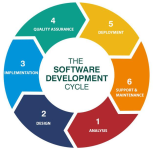To ensure you get the most out of your CIN membership and stay connected with the latest updates, we are asking all members to update their community profiles. Please take a few moments to log in and:
• Complete all sections of your profile
• Review your current information for accuracy
• Enter an alternative email address if desired (CIN requires your valid business email address for your training organization).
Keeping your profile up to date helps us better serve you, ensures your account is correctly linked with CompTIA’s CRM, streamlines processes, enhances communication, and guarantees you never miss out on valuable CIN opportunities.
Thank you for taking this important step! step!

